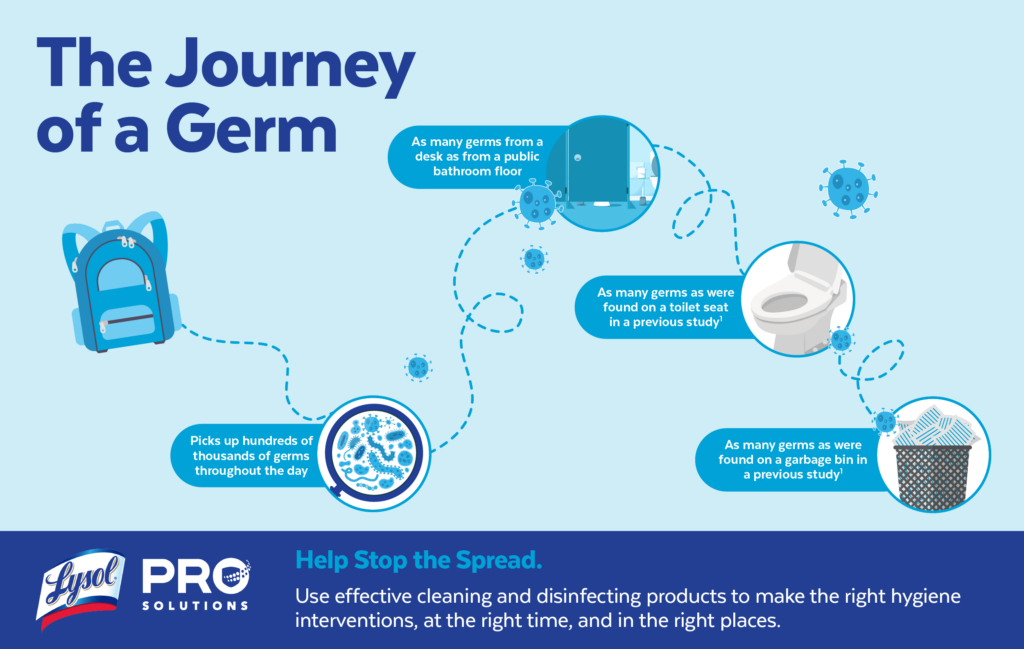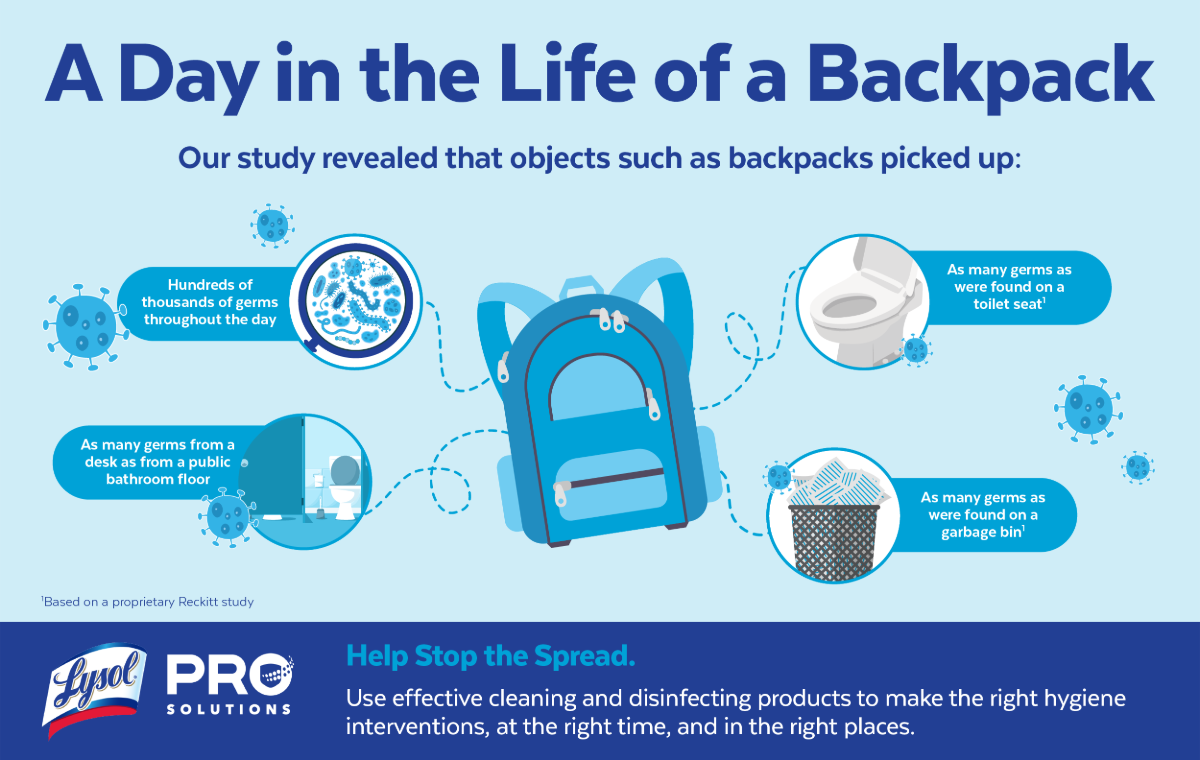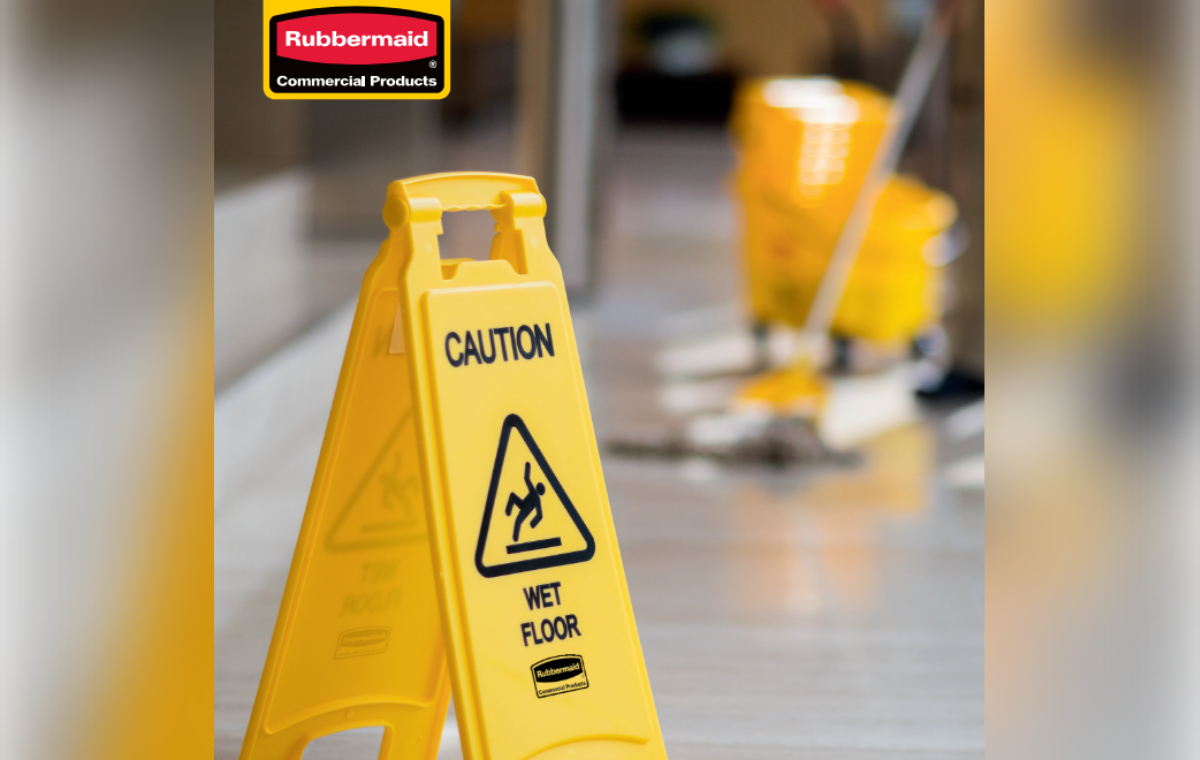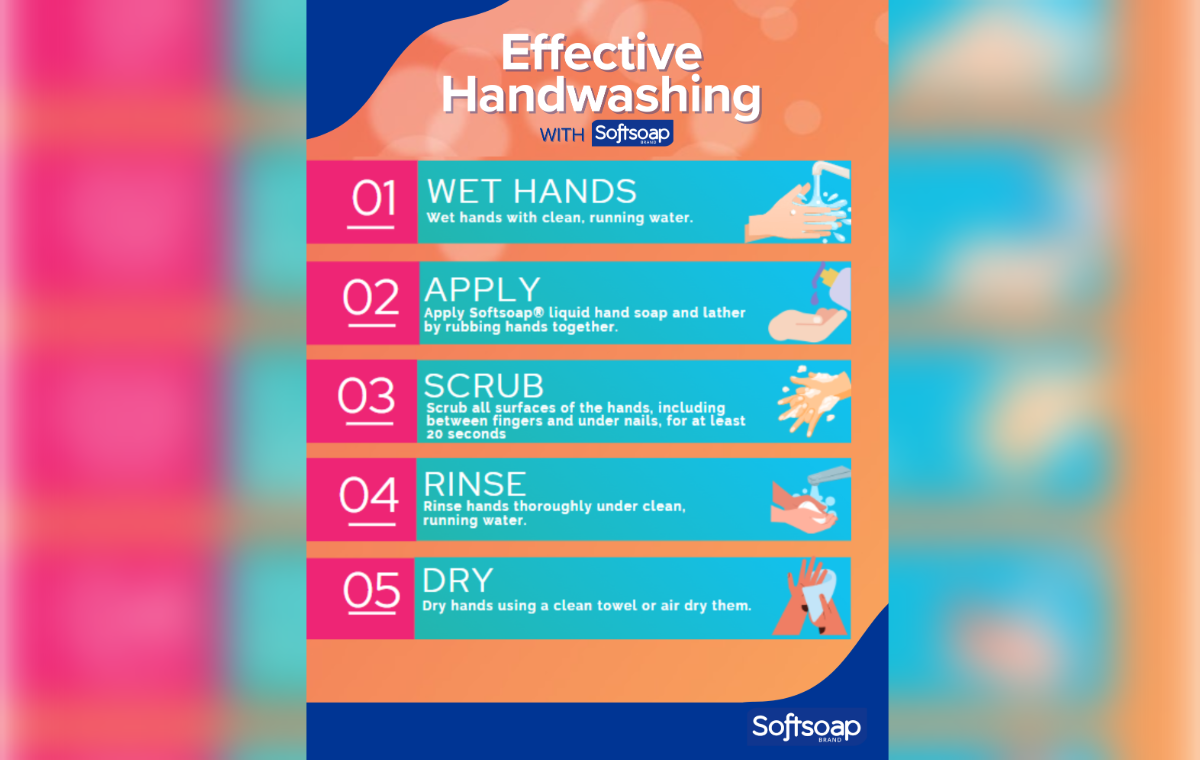As school administrators and facilities staff prepare for the upcoming back-to-school season, now is the time to consider how to help protect educational environments in a way that is both effective and operationally efficient.
The importance of the role of hygiene in schools cannot be understated. Clean facilities help foster a conducive learning atmosphere and reduce absenteeism, thereby contributing to the nation’s educational advancement. But with many schools facing budget constraints, how can this be accomplished in a cost-effective manner? The answer lies in developing a hygiene program that is informed by science.
Understanding the Science
Close quarters, shared spaces, and high-touch surfaces can make it easy for germs to spread in schools, particularly those leading to respiratory and gastrointestinal illnesses. A recent study[1] by Lysol Pro Solutions revealed how easily everyday objects such as backpacks can accumulate germs in communal spaces. The results showed that backpacks pick up hundreds of thousands of germs throughout the day, and – surprisingly – as many germs from a desk as from a public bathroom floor.

While a school hygiene program should be holistic, for example, encouraging good hand hygiene and ensuring students and staff stay home when sick, efficacious surface hygiene is key to helping break the chain of transmission between objects such as backpacks and other surfaces and people.
To achieve this, cleaning and disinfecting programs should take into consideration the science of targeting high-touch points at the times that matter most to help break the chain of infectious disease transmission. In its recently released guidance for preventing the spread of infections in kindergarten through 12th grade schools, the CDC suggested this should include desks, countertops, doorknobs, computer keyboards, hands-on learning items, faucet handles, phones, and toys.[2]
Optimizing Efficiency without Impacting Effectiveness
While facility managers have a role in helping protect students and staff, they also have a responsibility to manage budgets, resources, and drive efficiency.
Schools should consider that just by optimizing their cleaning and disinfection practices, they can cut costs and reduce labor time while also elevating the standard of hygiene they provide for students and staff. Rather than the commonly used two-step process that involves pre-cleaning and then disinfecting, school cleaning teams can use a product such as Lysol® Disinfecting Wipes that is designed to facilitate a more efficient one-step cleaning and disinfecting process that just involves wiping the area thoroughly with a wipe that is effective at simultaneously cleaning and killing germs.
Of course, a priority for any school hygiene program must be to ensure that it is as successful as possible in its mission to keep students and staff protected from germs – so efficiency gains must not come at the expense of efficaciousness. Lysol Disinfecting Wipes and Lysol Disinfectant Spray kill 99.9% of viruses and bacteria,² including cold, flu, RSV, and norovirus, which are common in school environments, as well as help remove allergens and dust mites. To help ensure product efficacy, cleaning teams should be trained to use such products following specific label directions, combined with the science-led hygiene approach discussed above.
Inspiring Confidence and Trust
Protecting school spaces is no easy feat – it is a complex challenge requiring a science-based approach to hygiene that doesn’t come at the expense of cost and labor efficiency. With the right products and procedures in place, schools can prepare themselves effectively and efficiently, and help drive confidence among parents on the wellness of their young ones throughout the coming school year.
In summary, schools seeking to establish best practices in hygiene could consider the following:
- Teaching children good hand hygiene at key moments that matter, such as after using the toilet, when arriving at school, or before eating.
- Using efficient, cost-effective products that are efficacious against viruses that are common in schools.
- Targeting cleaning and disinfection of surfaces and objects that are touched often, particularly if by many different people, such as desks, countertops, doorknobs, and faucet handles.
- Considering how surfaces could become contaminated during the day and working out a frequency that is practical. For example, increasing frequency of cleaning and disinfection at busy times, and reducing it when there is little occupancy.
- Immediately cleaning and disinfecting surfaces and objects that are visibly soiled.
- Implementing appropriate policies for cleaning up and disinfecting surfaces or objects that are soiled with bodily fluids or blood.
- Following label directions on cleaning and disinfection products so they work effectively on surfaces they are suitable for use on.
*This content was provided by Reckitt
[1] https://www.prnewswire.com/news-releases/journey-of-a-germ-new-study-reveals-backpacks-can-harbor-hundreds-of-thousands-of-germs-302073015.html
[2] https://www.cdc.gov/orr/school-preparedness/infection-prevention/actions.html






